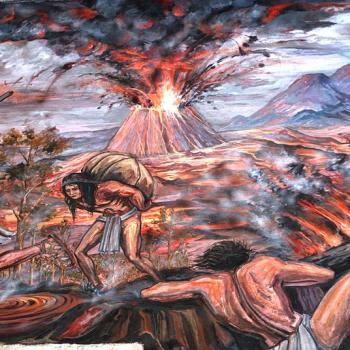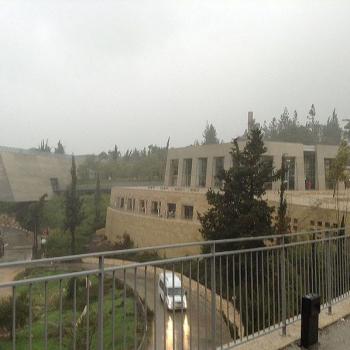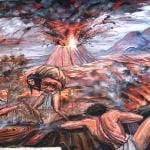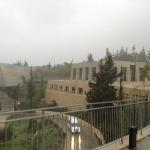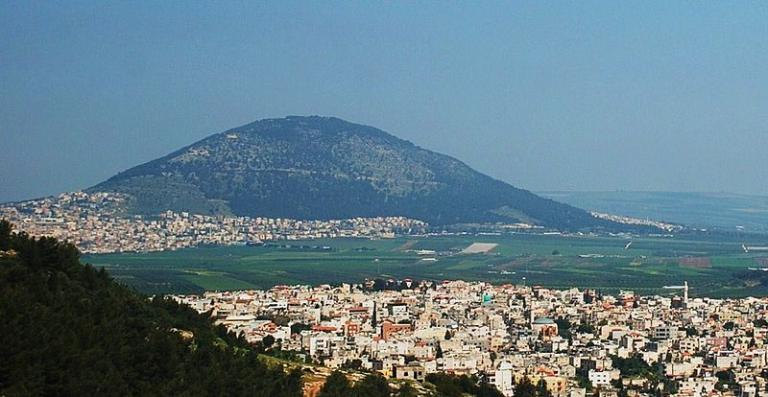
Nearing the end of the first draft of my book on Islam and the Middle East for a Latter-day Saint audience:
Construction of the temple raises a very serious question, though. Charles W. Penrose, speaking before his call to the Council of the Twelve and, later, to the First Presidency, remarked that “the gathering of the Jews to their own land” was in process in order “that they may build it up as it was in former times; that the temple may be rebuilt and the mosque of the Moslem which now stands in its place may be moved out of the way; that Jerusalem may be rebult [sic] upon its original site; that the way may be prepared for the coming of the Messiah.”[1] I am glad that Brother Penrose was not yet an apostle when he made this statement because I hope it is partially wrong. Let me clarify what I mean. Some Latter-day Saints look with positive pleasure to the day when the Dome of the Rock will be cleared off the Temple Mount and the site will be ready for the construction there of the great latter-day temple. I do not. I love the Dome of the Rock, which has to be ranked as one of the world’s truly important, interesting, and beautiful buildings. (Perhaps, I sometimes daydream, it will be possible to incorporate the Dome into the design of the new temple?) Furthermore, I am aware that the Dome of the Rock and the adjacent mosque of al-Aqsa are among the most holy shrines in the world of Islam. Any deliberate injury to them will almost certainly provoke terrible bloodshed. I cannot see why anybody would look forward to such a thing.
Unfortunately, though, we can be quite confident that terrible bloodshed will come. According to the Revelation of John, a horrific war of the evil nations against Israel will occur in the valley of Armageddon—also known as Esdraelon. This is a triangle-shaped plain situated about sixty miles north of Jerusalem, a place associated with a number of decisive ancient battles. The most traumatic of the conflicts that occurred there, from the point of view of ancient Israel—or, more precisely, ancient Judah—was the one in which pharaoh Necho, going up against Assyria, was intercepted by the righteous king Josiah. Josiah did not appreciate the Egyptians’ unauthorized transit through his territory and went out to stop them. Unfortunately, he was killed in the ensuring battle.[2] So the place already had strong and melancholy associations in the minds of Jews. But, looking into the future, John saw
spirits of devils, working miracles,… go forth unto the kings of the earth and of the whole world, to gather them to the battle of that great day of God Almighty… And he gathered them together into a place called in the Hebrew tongue Armageddon.[3]
The prophet Joel apparently also knew about this titanic struggle.
For, behold, in those days, and in that time, when I shall bring again the captivity of Judah and Jerusalem [i.e., when I shall bring the captives back], I will also gather all nations, and will bring them down into the valley of Jehoshaphat… Proclaim ye this among the Gentiles; prepare war, wake up the mighty men, let all the men of war draw near; let them come up: Beat your plowshares into swords, and your pruninghooks into spears … [4] Assemble yourselves, and come, all ye heathen… Let the heathen be wakened, and come up to the valley of Jehoshaphat: for there will I sit to judge all the heathen round about. Put ye in the sickle, for the harvest is ripe: come, get you down; for the press is full, the fats [i.e., vats] overflow; for their wickedness is great. Multitudes, multitudes in the valley of decision: for the day of the Lord is near in the valley of decision.[5]
Armed and bloody conflict seems inevitable. Does that mean that we as Latter-day Saints and as citizens of our respective nations should simply sit back and let it happen? Does it mean that we have no responsibility as citizens of the world or, it may be, even as government officials to try to make an unpleasant prophecy fail? I cannot imagine that our Heavenly Father would have us draw such a conclusion. “Therefore,” the Lord directs us, “renounce war and proclaim peace, and seek diligently to turn… the hearts of the Jews unto the prophets, and the prophets unto the Jews; lest I come and smite the whole earth with a curse, and all flesh be consumed before me.”[6]
[1] Journal of Discourses 24:215.
[2] Judges 23:29. See also Judges 5:19; 2 Kings 9:27; Zechariah 12:11.
[3] Revelation 16:14, 16.
[4] This is a direct contrast to Isaiah 2:4 and Micah 4:3.
[5] Joel 3:1 2, 9-14.
[6] Doctrine and Covenants 98:16-17.
Posted from Newport Beach, California



